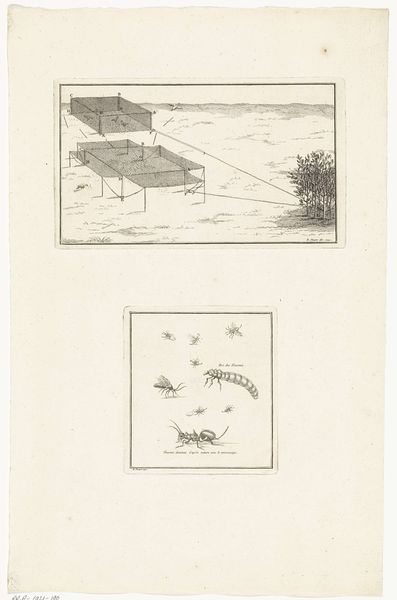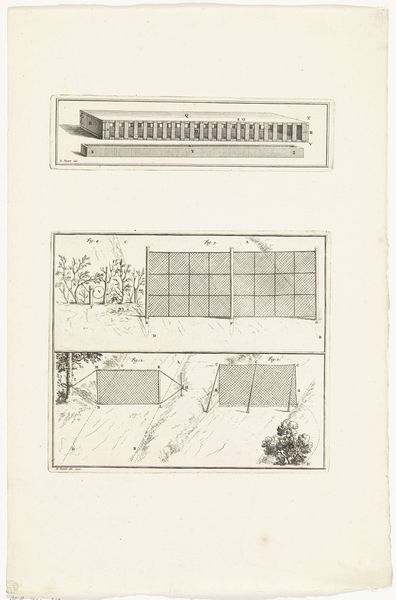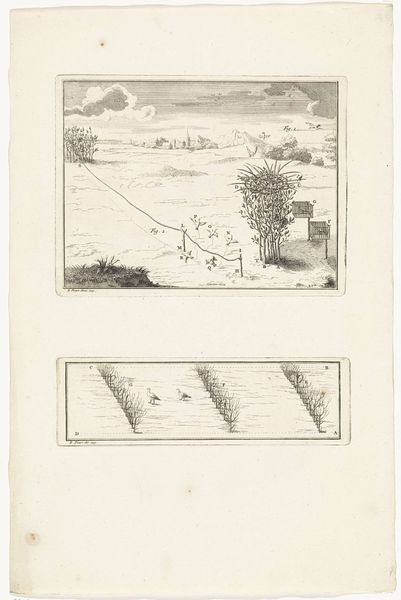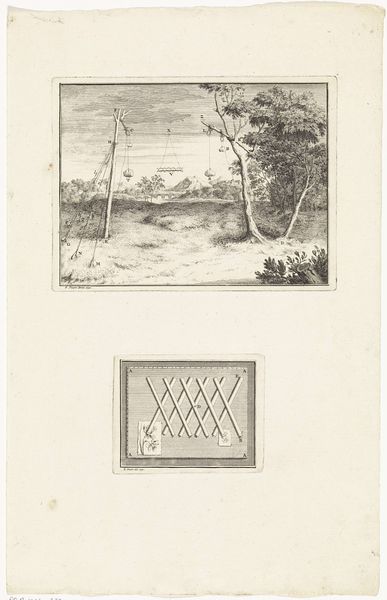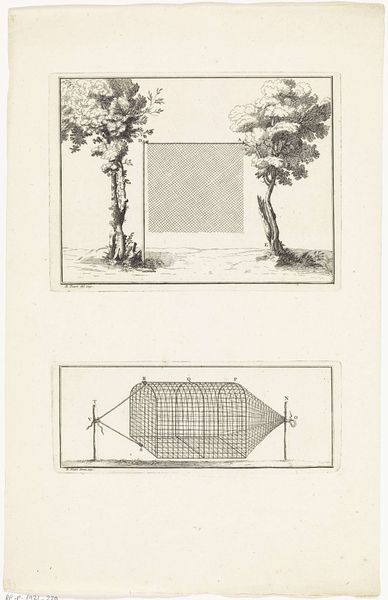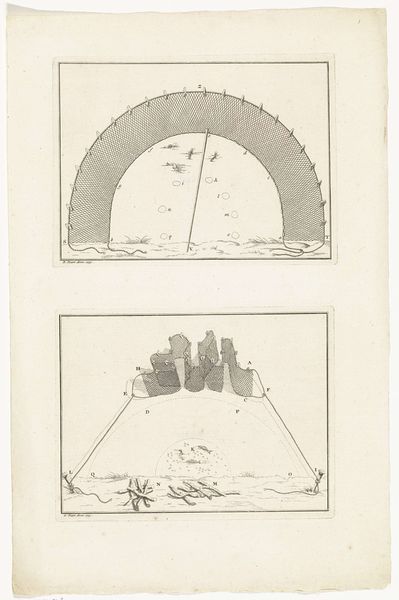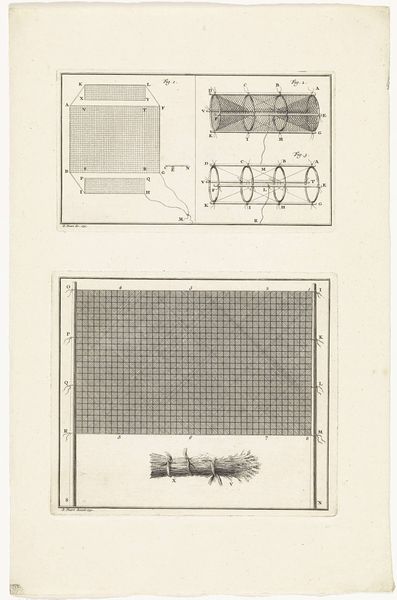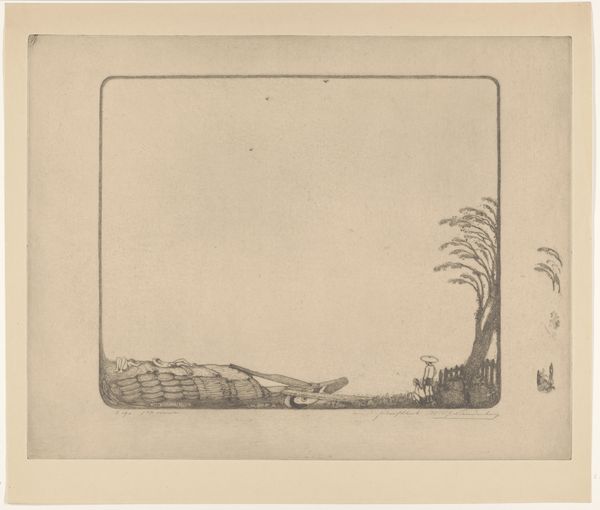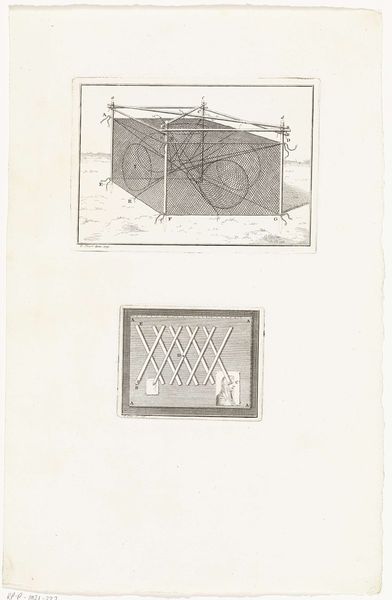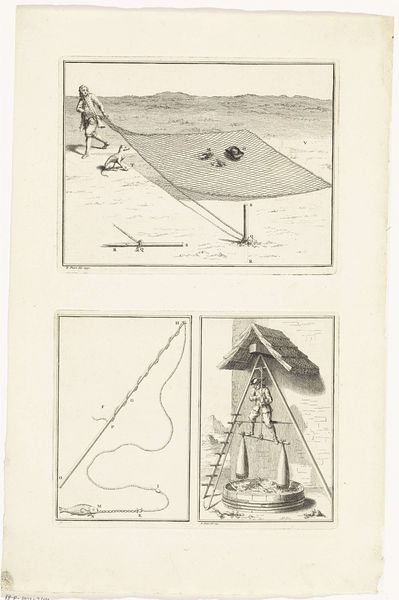
print, etching, engraving
# print
#
etching
#
old engraving style
#
landscape
#
etching
#
pen-ink sketch
#
genre-painting
#
engraving
Dimensions: height 81 mm, width 183 mm, height 143 mm, width 183 mm, height 380 mm, width 247 mm
Copyright: Rijks Museum: Open Domain
Curator: We're standing before "Visnet en vogelvallen," which translates to "Fishing net and bird traps," an etching and engraving by Bernard Picart from around 1730. It's part of the Rijksmuseum collection. What strikes you immediately? Editor: It's spare, almost clinical. The delicate lines seem to present traps – snares and nets – as diagrams more than scenes. There's a detachment that's unsettling. Curator: Absolutely. The apparent simplicity belies a commentary on power and control. Look closely: the nets and traps aren’t just devices, they are symbols of systems of oppression, ways of controlling and exploiting vulnerable populations. How do these technologies interact within a specific political system, say colonization or the emergence of capitalism? Editor: I see what you mean. The materiality of these traps - the mesh of the nets, the cage-like structure, speaks to human intervention in the natural world. We can understand these as products of labor. Where did Picart get these illustrations? Are these generic nets and traps, or ones specific to a place and time? Curator: Picart was known for his meticulous documentation. So it stands to reason that these technologies existed in the era in which he created the artwork. The netting shows us how intertwined are culture, environment, and technology. The image makes visible a network of cause and effect. Editor: And who is caught? Or kept out? The boundaries feel very deliberately constructed. Look at the two landscapes rendered, each feels circumscribed by design. The landscapes look more like architectural floor plans. I can easily imagine Picart, situated as he was within a specific context in which nature becomes industrialized, seeing things this way. Curator: Precisely. It also speaks to the act of capture as spectacle. What is made visible – and what is not? Editor: A good question, considering the piece hangs in the Rijksmuseum. It prompts me to consider museums and the state as historical projects designed for containment and control of information and value. Curator: Indeed. It gives one pause to consider not just how we create systems of power, but how we participate in them. Editor: For me, the piece serves as a powerful reminder to interrogate the often unseen mechanisms of our interactions with the world, natural and constructed.
Comments
No comments
Be the first to comment and join the conversation on the ultimate creative platform.
